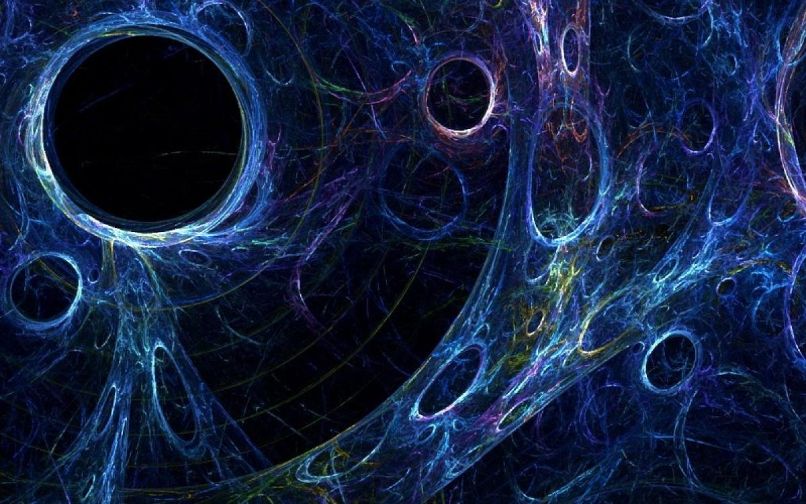The universe encompasses everything known so far, but only it is the tip of the iceberg in an immense sea of mysteries. One of them is dark matter like and the question that is related to it: is it the most abundant element? The answer is yes.
In the last century, it became known that. In the universe, there is a type of matter with totally mysterious physical properties. It is not at all comparable to other types of energy or matter, but one thing is certain. Compared to other elements in the universe, dark matter is 6 to 7 times more abundant. The reason? Several hypotheses are still being handled, but nothing concrete.
You may also be interested in our article: Get to know these great phrases about the universe and who said them!
An introduction to the topic. What is dark matter?
To understand what dark matter is, It must be traced back to almost 100 years ago. Thanks to the intervention of Jan Oort and later, Fritz Zwicky, it is known that dark matter is a tangible fact.

Source: ivdes
According to their conclusions, dark matter is an abundant element in the universe incapable of capturing, absorbing or emitting light. It is present in all the gravitational processes of large space objects, contributing to the expansion of galaxies. Therefore, understanding what dark matter is is more important than is believed for sure.
In short. What are the characteristics of dark matter?
Starting from the most important premise, dark matter is an element that is found in large quantities in the universe. Even in the observable universe, up to 85% is made up of dark matter itself.
In general terms, it is known by that name, because it is a type of matter that is not capable of capturing or emitting electromagnetic radiation. That is, it is an element whose composition does not emit any type of light or electrochemical signal.
Furthermore, it has been defined as "any element other than dark energy or ordinary matter." In fact, not even the scientific community has established an exact agreement about its composition. Some infer that it could be made up of neutrinos and other heavy elements; others, however, are more reserved.
Still, the dark matter neutrino theory is quite plausible. The main reason is that they are microscopic particles that lack little mass. In turn, they emit no apparently detectable energy and have little to do with other targets in the universe. Therefore, it would be normal to think that they are part of the most abundant element in the universe.
In another order of ideas, it is common to ask: How could an element that does not emit light be discovered? A valid question. The answer is based on the fact that dark matter gravitationally influences the movement of galaxies and stars.
For this reason, its influence has been shown in the development of large galaxies, as well as in the orbital speed of stars. Indeed, although it is not possible to observe dark matter with an optical telescope, other efficient methods have now been applied.
The history of dark matter and how it revolutionized thinking in astrophysics
The discovery of dark matter dates back to the beginning of the century, specifically between the years 1930 and 1933. Those responsible were Jan Oort y Fritz Zwicky, Dutch and Swiss astrophysicists respectively.
Both, although they did not work together, laid the foundations for a correct understanding of the presence of dark matter. Although it is not an element that can be observed, thanks to them, it is known that it is there.
Even his influence is greater than it really seems. She is able to participate in the expansion of galaxies, as well as interact with the gravity of other space objects. And, as if that were not enough, she is present in every corner of the universe as such. Without a doubt, it is the most abundant element known so far.
Jan Oort and his precise vision towards the stars
Since 1930, Jan Oort He was dedicated to observing and studying the orbital velocity of stars. At that time, it was known that stars occupied a specific place in the universe according to their speed and their mass.
However, Oort's question was the following: does the galaxy have enough mass to house all the stars? And the response surprised. Both the mass of stars and galaxies must be proportional for calculations to be accurate.
A mass deficit in the galaxy, would cause the ejection from the orbit of the stars into intergalactic space. In this sense, Oort postulated that the mass of the galaxy was insufficient to prevent the stars from moving in a volatile way.
Yet why then did they retain their behavior? Basically, the conclusion is that visible and known matter is not the only plausible element. In effect, the universe is made up of a type of "non-visible matter" that complements or "fills in" the missing space.
The consolidation of the term thanks to Fritz Zwicky
Some time later, Fritz Zwicky continued with the premise of dark matter, but from a different perspective. He applied the same study premise as Oort, but aimed at the Coma cluster of galaxies.
In short, he set about estimating the orbital velocity between the galaxies in the cluster, as well as the mass between each one. Likewise, based on each one's ability to shine, he concluded that a piece of the puzzle was missing.

Source: ivdes
Basically, Zwicky determined that, the orbital velocity of the galaxies did not agree with what is expected. There was not enough matter to emit such data, so there must be something beyond.
By virtue of this, Zwicky also finished his studies, proclaiming the existence of a type of non-visible matter. Why? Because despite the lack of consistency in the data, the galaxies maintained the same behavior. An event that could only be explained by the presence of more matter than normal, but which is not visible.